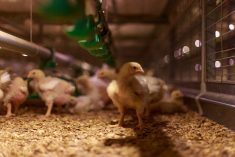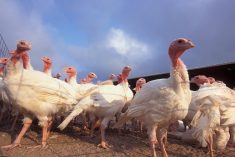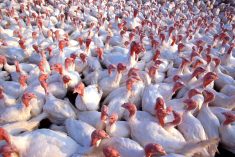Reuters — The fast-spreading avian flu virus was confirmed for the first time in Nebraska, at a commercial egg-laying farm that housed a flock of 1.7 million chickens, the U.S. Department of Agriculture said on Tuesday.
The case in Dixon County, Nebraska, brings the number of states affected by the outbreak to 16, and the U.S. tally of birds that have either died or will be killed to 32 million.
The U.S. poultry and egg industry has been grappling for months with the biggest outbreak on record of avian influenza in the U.S.
Read Also

U.S. grains: CBOT soybeans, corn, wheat fall in USDA data aftermath
Chicago grains took a dive on Friday, following a closely watched U.S. government crop report and the release of export data that could provide clues into Chinese buying.
Authorities do not know how the H5N2 virus reached the Nebraska farm. The property has been quarantined and the flock will be culled, USDA said.
“Unfortunately, Nebraska has joined a long list of states currently dealing with highly pathogenic avian influenza,” said Greg Ibach, director of the Nebraska Department of Agriculture.
Nebraska farmers and state regulators have voiced growing concern about the virus spreading from neighbouring Iowa, where more than 24 million birds from 39 farm sites have been affected.
The worries recently prompted one Nebraska landfill owner to turn down business from a poultry farm in Iowa, whose owners were seeking a place to dispose of a culled flock due to avian influenza, said Brian McManus, spokesman for the Nebraska Department of Environmental Quality.
“Some people from our agency met with the landfill owner. We had voiced some concerns about the hazards of transporting poultry carcasses right now, because of the risk of spreading the virus,” said McManus, who declined to identify the name of the landfill. “Right now, transporting those birds is an option we discourage.”
Heightened concerns
The continuing spread of the highly contagious H5 virus is worrying to farmers and investigators, who have hoped that warmer spring weather would help lower the number of infections in birds and curtail the virus’ spread.
But the outbreak has shown few signs of waning so far. On Monday, a strain of avian flu that had previously been found only in the Western United States cropped up in an Indiana backyard poultry flock.
The H5 strains in the current U.S. outbreak pose a low risk to human health, experts say, and no human infections have been identified so far.
To limit the virus’ spread, Canadian officials have imposed bans on travellers’ cross-border imports of live birds, raw poultry and eggs from U.S. states affected by avian flu, and restricted commercial imports from quarantine zones within those states. Nebraska hasn’t yet been added to the Canadian Food Inspection Agency’s list, but likely will be soon.
There have been three strains of H5 identified in North America in this outbreak.
In addition to Nebraska, other states with the H5N2 virus are Arkansas, Idaho, Iowa, Kansas, Kentucky, Minnesota, Missouri, Montana, North Dakota, Oregon, South Dakota, Washington and Wisconsin. In Canada, the virus was identified on 12 farms in British Columbia in December and three last month in Ontario.
The highly pathogenic H5N8 strain had been found in California, Idaho, Indiana, Oregon and Washington and in a dead wild duck in British Columbia. Canadian authorities also confirmed the H5N1 strain in birds at a “non-commercial” farm in B.C. in February.
— P.J. Huffstutter reports on agriculture and agribusiness for Reuters from Chicago. Includes files from AGCanada.com Network staff.














